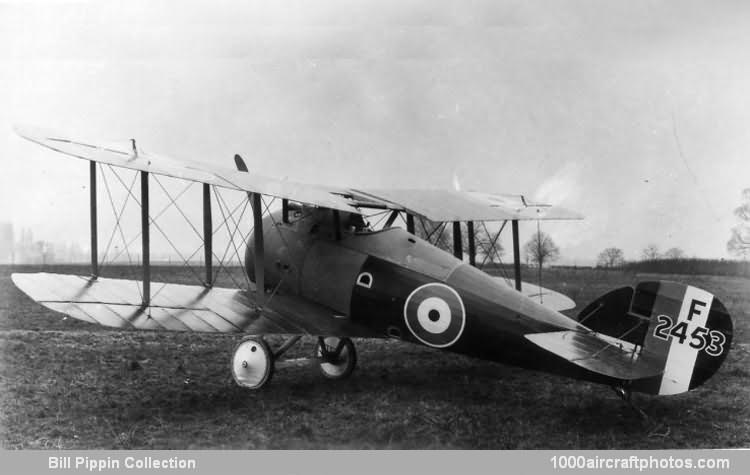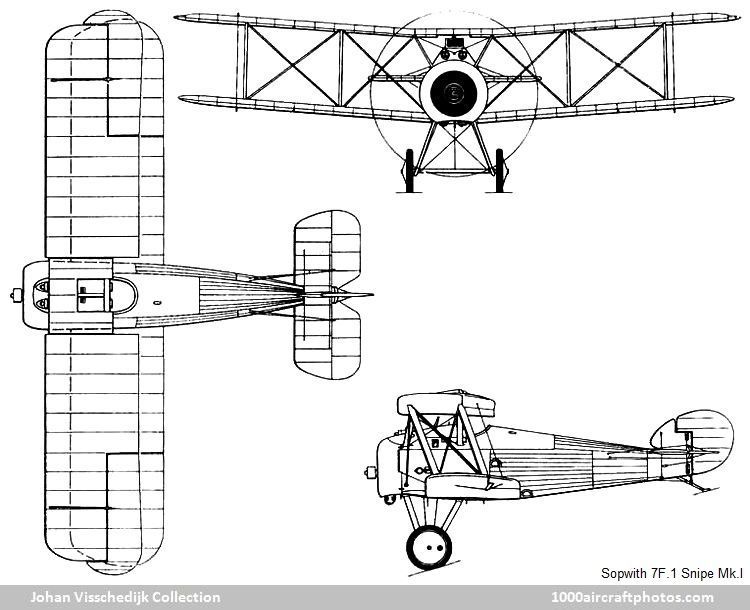03/31/2013. Remarks by Johan Visschedijk: "Conceived in the summer of 1917 as a successor to the Camel, the Sopwith 7F.1 single-seat fighter, later to be named the Snipe, was intended to utilize the new and more powerful Bentley B.R.2 nine-cylinder rotary engine (which was to commence bench running in October 1917) rated at 234 hp, and to afford a superior view for the pilot. Six prototypes were ordered, and, being adjudged superior to its competitors, (the Boulton & Paul Bobolink and the Nieuport B.N.1), the Snipe was ordered into large-scale production.
The first prototype (with a B.R.1 engine) entered flight test in the early autumn of 1917, and production Snipes began to appear in the summer of 1918, contracts having been placed with the parent company, Boulton & Paul, the Coventry Ordnance Works, Napier, Nieuport & General, Portholme Aerodrome and Ruston, Proctor. Armament consisted of the standard pair of synchronized 0.303 in (7.7 mm) machine guns, and the Snipe was employed operationally for the first time on September 23, 1918.
For long-range escort duties, the 7F.1a Snipe Mk.1a was developed, increased fuel tankage extending endurance to 4.5 hours, and deliveries of this version commenced early in 1919. The last prototype, referred to as the Snipe Mk.II, was fitted with the 320 hp A.B.C. Dragonfly nine-cylinder radial engine, this being completed in April 1918, and entering production six months later as the Dragon.
06/30/2024. Remarks by Johan Visschedijk: "Of 4,500 Snipes ordered, 497 had been built by the end of December 1918, production continuing, despite heavy cancellations after the Armistice, into the early 1920s, with at least 1,100 eventually being delivered. The Snipe F2453 pictured on top of the page was built in January 1919 at the National Aircraft Factory (leased by Sopwith) at Ham, adjacent to Kingston upon Thames where Sopwith Aviation Company had its headquarter. The Snipe remained with RAF squadrons as late as 1926.


